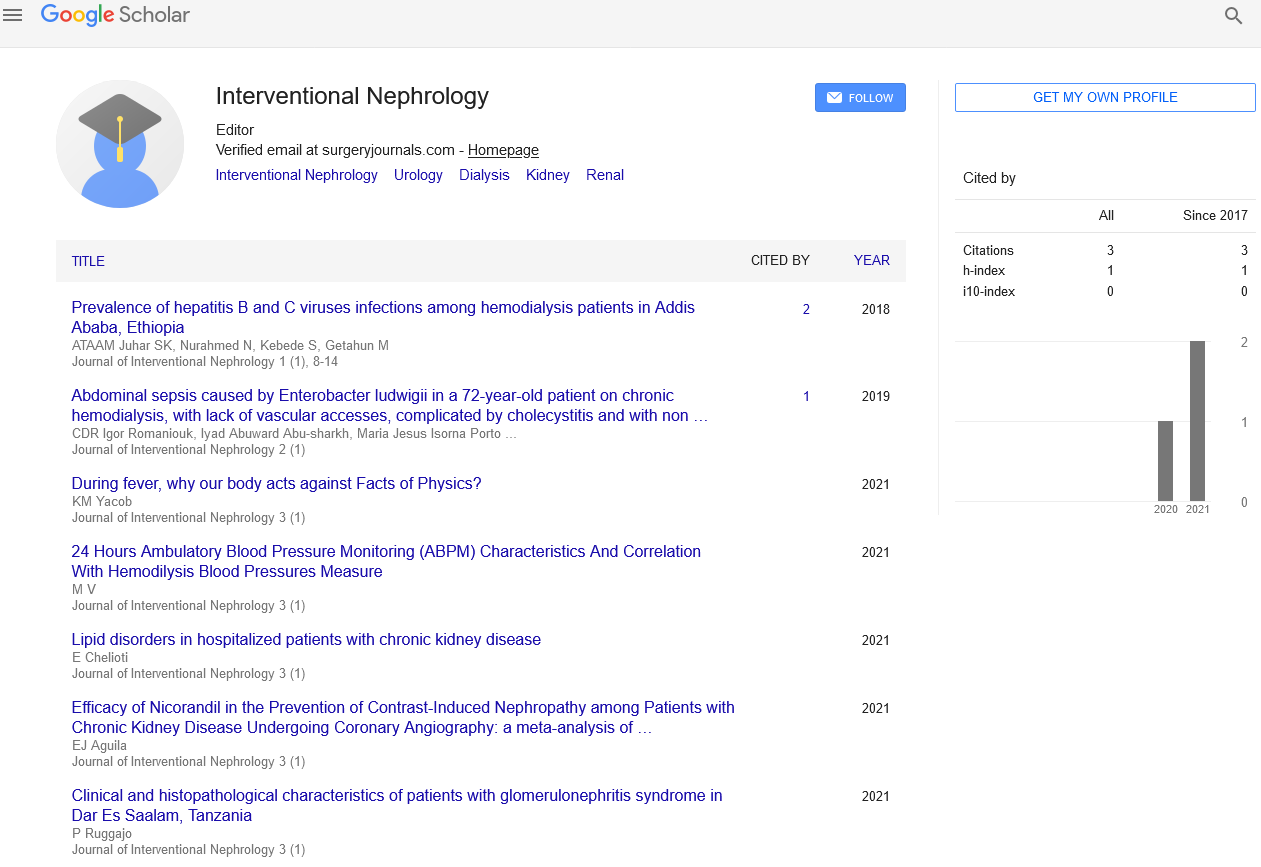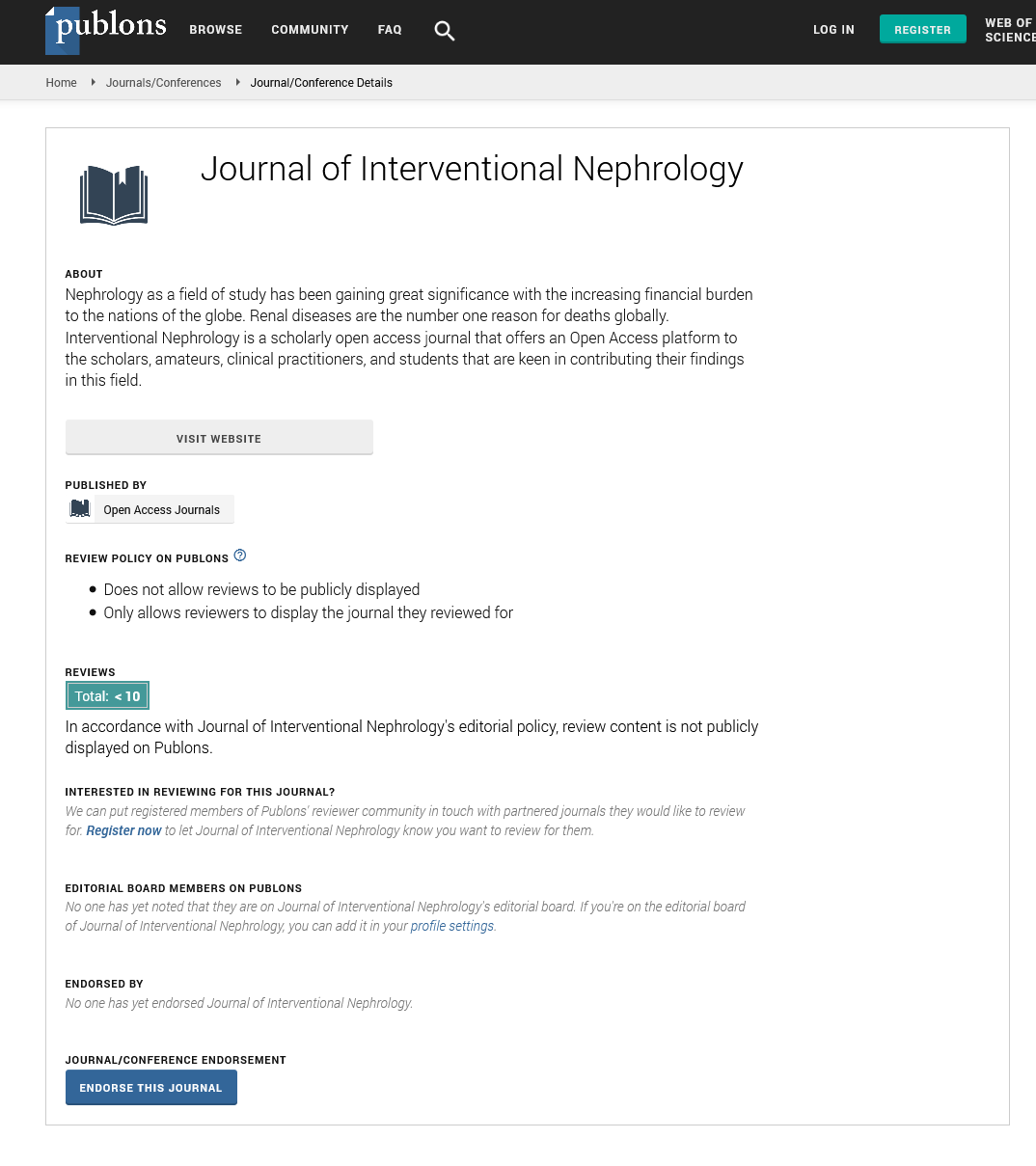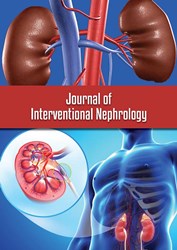Perspective - Journal of Interventional Nephrology (2024) Volume 7, Issue 2
Thrombotic Microangiopathy: A Comprehensive Examination of Causes, Symptoms, Diagnosis, and Treatment
- Corresponding Author:
- Ajinath Shelke
Department of Nephrology,
NIILM University,
Germany
E-mail: Ajinaths646436mn@gmail.com
Received: 21-Mar-2024, Manuscript No. OAIN-24-130178; Editor assigned: 22-Mar-2024, PreQC No. OAIN-24-130178 (PQ); Reviewed: 05-Apr-2024, QC No. OAIN-24- 130178; Revised: 12-Apr-2024, Manuscript No. OAIN-24-130178 (R); Published: 22-Apr-2024, DOI: 10.47532/oain.2024.7(2).246-247
Abstract
Thrombotic Microangiopathy (TMA) is a complex medical condition characterized by the formation of blood clots in the small blood vessels throughout the body, leading to organ damage and dysfunction. In this article, we embark on a detailed exploration of TMA, unraveling its intricacies, from underlying mechanisms to clinical manifestations, diagnostic strategies, and therapeutic interventions.
Keywords
Thrombocytopenia ● Acute kidney injury ● Hypertension ● Proteinuria ● Nausea ● Diarrhea
Introduction
Understanding thrombotic microangiopathy
Thrombotic microangiopathy encompasses a spectrum of disorders characterized by microvascular thrombosis, resulting in ischemia and injury to multiple organs. The hallmark pathological features of TMA include endothelial damage, platelet activation, and the formation of fibrin-rich thrombi within small arterioles and capillaries. This aberrant thrombotic process can lead to tissue ischemia, Microangiopathic Hemolytic Anemia (MAHA), thrombocytopenia, and end-organ dysfunction.
Exploring primary and secondary TMAs
TMA can manifest as primary or secondary forms, each with distinct underlying mechanisms and clinical associations. Primary TMAs include conditions such as thrombotic Thrombocytopenic Purpura (TTP) and atypical Hemolytic Uremic Syndrome (aHUS), characterized by dysregulation of the von Willebrand Factor (vWF)-cleaving protease ADAMTS13 and dysregulation of the complement system, respectively. Secondary TMAs may arise in the setting of systemic infections, autoimmune diseases, malignancies, transplantation, pregnancyrelated complications, or exposure to certain medications.
Description
Clinical presentation and symptoms
The clinical presentation of TMA can vary widely depending on the underlying cause, affected organs, and the extent of microvascular thrombosis. Common symptoms and manifestations may include:
• Microangiopathic hemolytic anemia,
evidenced by schistocytes on peripheral
blood smear.
• Thrombocytopenia, leading to increased
bleeding tendency and petechiae.
• Acute kidney injury, characterized by
decreased urine output, fluid retention,
and electrolyte imbalances.
• Neurological symptoms, such as headache,
confusion, seizures, and focal deficits.
• Gastrointestinal manifestations, including
abdominal pain, nausea, vomiting, and
diarrhea.
• Hypertension, proteinuria, and signs
of end-organ damage (e.g., cardiac
dysfunction, visual disturbances).
Diagnostic approaches and evaluation
The diagnosis of TMA necessitates a systematic evaluation encompassing clinical assessment, laboratory investigations, imaging studies, and, in some cases, tissue biopsy. Key diagnostic modalities include:
• Complete blood count (CBC) with
peripheral blood smear to assess for evidence
of MAHA and thrombocytopenia.
• Coagulation studies to evaluate for evidence
of disseminated intravascular coagulation
(DIC).
• Renal function tests, including serum
creatinine and Blood Urea Nitrogen (BUN),
to assess kidney function.
• ADAMTS13 activity assay to differentiate
between TTP and other causes of TMA.
• Imaging studies (e.g., ultrasound, CT scan,
MRI) to assess for organ involvement and
complications.
• Tissue biopsy (e.g., renal biopsy) in select
cases to confirm the diagnosis and evaluate
for underlying pathology.
Management and treatment strategies
The management of TMA revolves around addressing the underlying etiology, providing supportive care, and implementing targeted therapies to mitigate thrombotic processes and prevent further organ damage. Treatment modalities may include:
• Plasma exchange (plasmapheresis) as firstline
therapy for TTP, aimed at removing
circulating antibodies and replenishing
ADAMTS13 activity.
• Corticosteroids and immunosuppressive
agents in cases of autoimmune-mediated
TMAs or refractory TTP.
• Supportive measures, including transfusion
support, electrolyte correction, blood
pressure control, and renal replacement therapy as needed.
• Treatment of underlying triggers or associated
conditions (e.g., infection, malignancy, drug
toxicity).
• Novel targeted therapies, such as monoclonal
antibodies or complement inhibitors, for
select patients with complement-mediated
TMAs.
Prognosis and complications
The prognosis of TMA hinges on several factors, including the underlying cause, severity of organ involvement, and timely initiation of treatment. While many cases of TMA respond favorably to therapy, severe or untreated TMAs can lead to significant morbidity and mortality, with complications such as multiorgan failure, stroke, and end-stage renal disease.
Preventive measures and future directions
Preventing TMA involves identifying and mitigating predisposing factors, optimizing treatment of underlying conditions, and implementing preventive measures where applicable. Genetic counseling and screening may be considered for individuals with inherited forms of TMA, while patient education and awareness are crucial for early detection and intervention.
Conclusion
In conclusion, thrombotic microangiopathy represents a complex and multifaceted disorder characterized by microvascular thrombosis, MAHA, and thrombocytopenia, with diverse etiologies and clinical presentations. Through a comprehensive approach encompassing prompt diagnosis, targeted therapy, and supportive care, clinicians can navigate the intricacies of TMA and strive to improve outcomes for affected individuals.


